Birds
Basic guide to setting up your own aviary
When it comes to creating an interesting home for a variety of cage birds, then you may want to consider an aviary. An aviary can be situated indoors or outdoors and provides a spacious home to admire your feathered friends, providing them with plenty of space to fly and interact with others in a more naturalised environment.
Choosing birds for your aviary
Many common species that are usually kept as single pets can be safely kept together in pairs or in greater numbers depending on the size of the aviary. From zebra finches and canaries to budgerigars and cockatiels, it is possible to have a single species or a selection of species together.
It is wise to keep even numbers of males and females to prevent fighting or keep single sex male or female birds together, especially if you do not want them to breed. Many larger birds like parrots should be kept alone or in pairs without any other species in their aviary to prevent fighting. It is also important not to over stock your aviary to ensure all the birds live in harmony.
Installing an indoor aviary
Many large cages can suitably house a variety of birds. If you cannot find a cage to suit your needs or that fits in with your room décor or size, then you can either build or design your own. Many proprietary cages use mesh or metal bars at a suitable spacing to prevent your birds from escaping.
Deciding on an outdoor aviary
If you have a large garden, want to convert a summerhouse or garden shed, then an outdoor aviary could be a perfect choice. You can purchase a purpose built outdoor aviary in various ornate designs to complement your taste and add a feature to your garden.
Your aviary will be subject to the prevailing weather conditions, so you will need to treat the timber with suitable water-based preservative to protect the wood as well as ensure that your birds are not affected should they digest any of the wood.
If you build your own outdoor aviary and flight, then you will need to consider how to prevent rodents from getting in. Mesh can be installed that should be fixed and buried down and outwards in a trench to prevent burrowing animals from gaining access. Installing wire on both the outside and the inside of the supporting batons can also keep cat claws and birds apart. Cats and birds of prey can be prevented from terrorising your birds by covering the roof with corrugated plastic or wooden roof panels. The roof can also help to prevent droppings from wild birds contaminating your aviary and spreading diseases.
An outdoor shed will usually form the shelter for your birds and a flight area, created with wood and mesh, will provide a safe enclosure for your birds to exercise. A flight can have various partitions to help segregate birds as required. The shelter can have smaller cages for breeding pairs.
There should be various hatches on the shelter so that birds have various ways in and out, which can help to prevent bullying. You can also fit doors to the hatches to allow you to close off the flight area during inclement weather or at night. This can prevent losses where birds are startled at night by cats or other animals by flying into the mesh in an attempt to escape and then end up hurting themselves.
Common parts of an aviary
Cages will usually come with perches and spaces for water and seed pots. You can add plants in an aviary for small finches, but budgerigars and other parakeets and parrots will quickly destroy plants, as well as other wooden fixtures and fittings.
Smaller birds are more energetic than larger birds, so they will more space to fly around their enclosure. Do not overcrowd the space with perches, toys, and other fixtures. Always make sure that all perches are securely fixed so that they do not break or fall, as this can cause injuries. Use a mixture of thicknesses in all perches, as this helps to maintain healthy feet. All perches should be washed down to remove droppings and other debris that can build up on the branches.
It is important to make sure your aviary is well ventilated so that the birds have access to fresh air. While birds to not need access to direct sunlight, it is good for their health to be exposed to natural light.
An indoor or outdoor aviary will need places for supplying fresh food and water. Waste food and seed husks should be removed regularly, especially with an outdoor aviary to prevent rodents from becoming a problem. An aviary will need cleaned out every few days to remove build-ups of droppings and other debris to prevent disease and unsanitary conditions developing for your birds.
To prevent accidental escape of your birds, you may have a double entry system, where you have two doors to go through to get access to them. By closing the first door before opening the second, you can make sure none of your birds escape. This is more important with an outdoor aviary than an indoor one; however, windows or doors in the room housing an indoor aviary will serve the same purpose.
Birds will seek shelter on high perches or in nest boxes. If you intend to breed any of your birds, you will need to install more nesting areas than there are pairs of birds, as this provides breeding pairs a choice of nesting locations. Nests should not be installed if you do not intend to breed with your birds although you may find an odd egg lying on the floor of the aviary if there are no nesting sites. These eggs can be safely removed. Removing eggs from nests is not a good idea as it can encourage more eggs to be laid. Breeding birds will need their diet supplemented with soft food such as boiled egg and soft food to help the parents feed their chicks.
An aviary can provide you a delightful home for various birds to add an interesting feature in your home or garden. Larger than a cage, an aviary promotes a more natural environment for birds to fly and interact. You can enjoy many hours caring for and watching your birds.



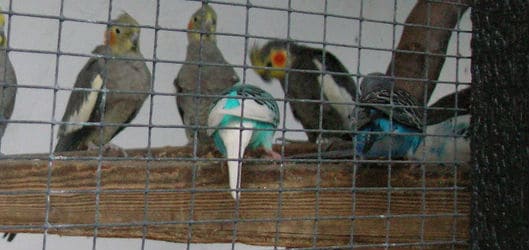
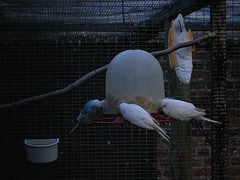
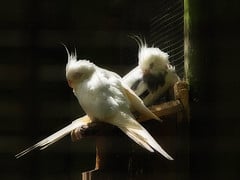
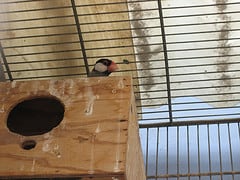
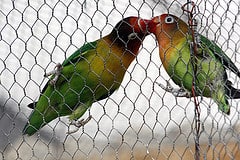
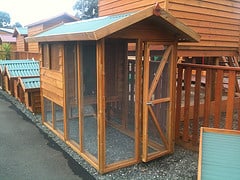
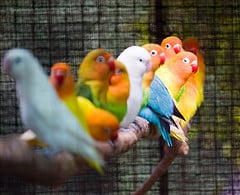
Thanks for sharing this basic guide to setting up our own aviary, I am very happy that I have found this during my search.
You’re welcome. Glad to hear that! 🙂
Hi Jordan! I have a 8×8 outdoor aviary, I was wondering how far apart should I install the perches? Also, I’ve cut a branch off one of my trees to give my parakeets something to hang out on, I don’t know what type of tree it is but are there any types of wood that could hurt them if they digest it.? Thank you for your help! Dermot Carroll
Brilliant, I am planning an outdoor aviary. Wood or steel the best? George
would finches need heating if we made aviary in shed?
Hi, Bob. Perhaps that depends on the situation. 🙂
Hi , could you tell me what is best flooring material for an outdoor aviary?
I am going to use a piece of rubber roofing on the floor of my indoor aviary and I was considering using bagged mulch either cedar or cypress is that a good choice for my floor the room is about 1o x 12 with a 9 foot cathedral ceiling I have a female eclectus and a mealy Amazon and I wanted to add either budges or finches does that sound like a good plan
I have a small aviary,Iwould like to breed some budgies how many nests and how to install them in the aviary